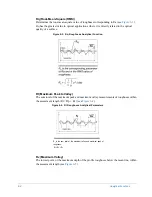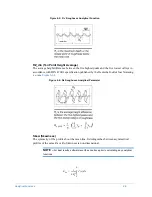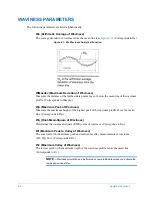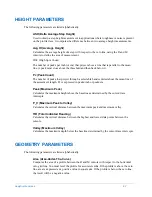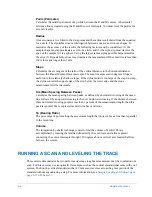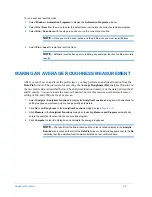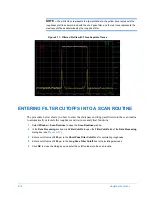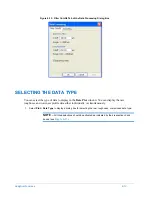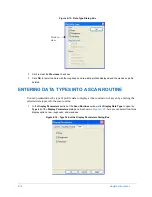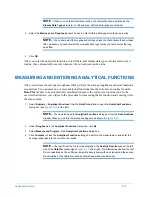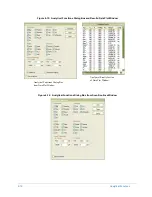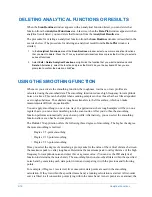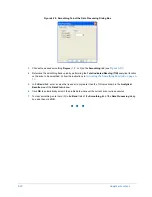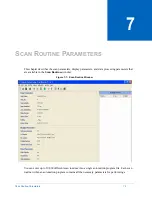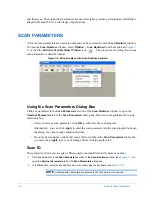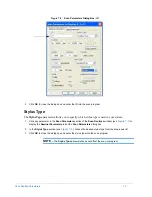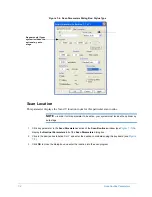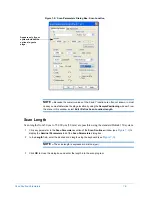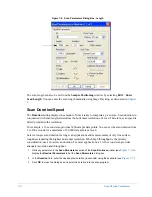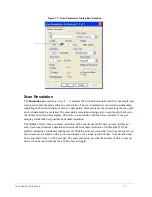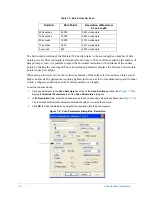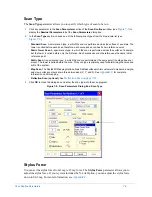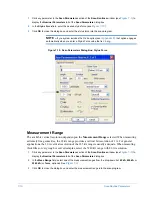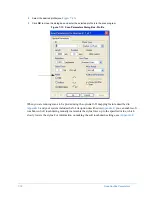
6-18
Analytical Functions
DELETING ANALYTICAL FUNCTIONS OR RESULTS
When the
Scan Routines
window appears with an analytical function listed, you can delete that
function from the
Analytical Functions
area. Likewise, when the
Data Plot
window appears with an
analytical result listed, you can delete that function from the
Analytical Results
area.
The procedure for deleting an analytical function from the
Scan Routines
window is described in the
exercise below. (The procedure for deleting an analytical result from the
Data Plot
window is
similar.)
1
In the
Analytical Functions
area of the
Scan Routines
window, select one or more analytical functions
that you want to delete. Press the C
TRL
key to select individual functions or press the S
HIFT
key to select a
series of functions.
2
Select
Edit
>
Delete Analytical Functions
or right-click the function that you want to delete and click
Delete.
Alternatively, select the function and press the D
ELETE
key on the keyboard. When you are
prompted to confirm the deletion, click
Yes.
USING THE SMOOTHING FUNCTION
Whenever you activate the smoothing function, the roughness, waviness, or raw profiles are
calculated using the smoothed data. The smoothing function reduces high frequency/low amplitude
noise on a trace. This can be helpful when scanning samples such as those that have films deposited
over rough substrates. The substrate roughness transfers to the film surface, which can make
measurements difficult or questionable.
You can apply smoothing in one of two ways. In applications where rough samples will be run on a
regular basis, you can enter smoothing into the scan routine. After you do this, the smoothing
function performs automatically on each scan profile. Alternatively, you can select the smoothing
function after a scan has been completed.
The Dektak 150 application offers the following three degrees of smoothing. The higher the degree,
the more smoothing is realized.
•
Degree 1: 5-point smoothing
•
Degree 2: 11-point smoothing
•
Degree 3: 23-point smoothing
Once you select the degree of smoothing, a prompt asks for the value of the vertical distance between
the maximum peak to valley roughness. Determine the maximum peak to valley distance of the high
frequency low amplitude noise and enter this or a greater value. (You can use the TIR analytical
function to determine the noise band.) The smoothing function smooths all data within the specified
noise band by examining each data point in turn and comparing it with the previous and following
points.
For example, if Degree 1 is selected, five consecutive data points are used in the smoothing
calculation. If they lie within the specified noise band, a running calculation is started. A first-order
curve is fitted to all consecutive points lying within the noise band. As new points are examined, the
Содержание Dektak 150
Страница 1: ......
Страница 2: ...P N 980 294 Standard P N 980 298 Cleanroom Revision A DEKTAK 150 SURFACE PROFILER USER S MANUAL ...
Страница 7: ......
Страница 17: ......
Страница 81: ......
Страница 105: ......
Страница 149: ......
Страница 191: ......
Страница 251: ......
Страница 257: ...A 6 Facilities Specifications Figure A 6 Dektak 150 without Enclosure Side View ...
Страница 258: ...Facilities Specifications A 7 Figure A 7 Dektak 150 Dimensions without Enclosure Top View ...
Страница 259: ...A 8 Facilities Specifications Figure A 8 Dektak 150 without Enclosure Center of Mass ...
Страница 273: ......
Страница 283: ......
Страница 320: ...3D Mapping Function E 37 Figure E 26 Database Options Button Figure E 27 Database Options Dialog Box ...
Страница 321: ......
Страница 331: ......
Страница 333: ......
Страница 336: ......
Страница 337: ......
Страница 349: ......

